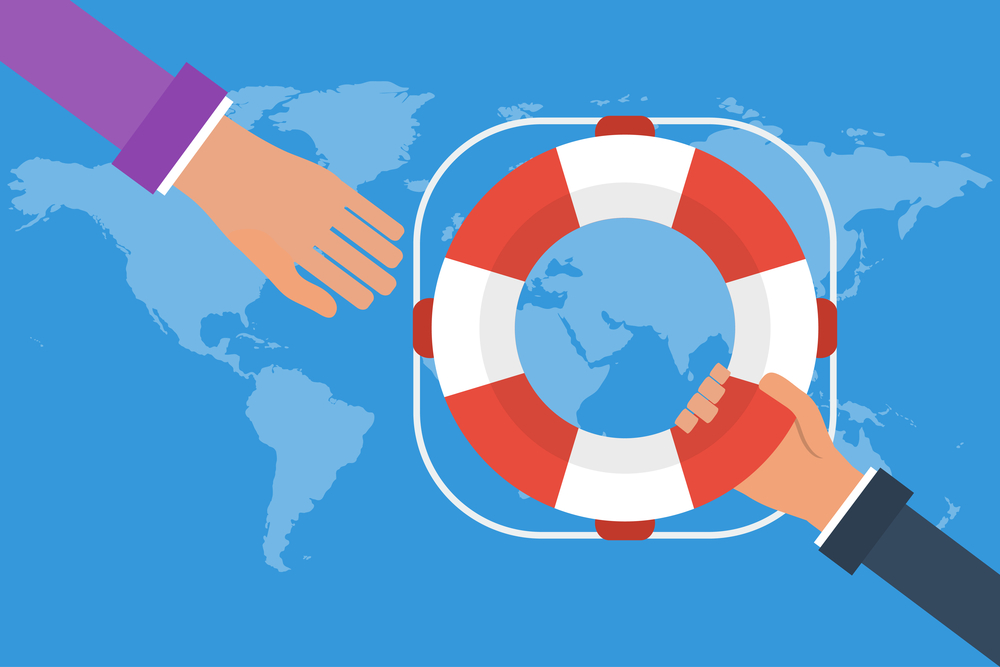At Vertical IQ, we recently have focused our research efforts on monitoring the industries most affected by COVID-19. On our free COVID-19 webpage, you’ll find economic updates, sector updates, and details on how specific industries are being impacted.
As you know, the nation’s economy has been hard-hit by the pandemic. Seasonally adjusted initial unemployment claims were 4,427,000 for the week ending April 18, a decrease of 810,000 from the revised level for the previous week. The seasonally adjusted insured unemployment rate was 11 percent for the week ending April 11, the highest level in the history of the seasonally adjusted series. These staggering numbers are of course a result of business closures and the economic downturn caused by the COVID-19 pandemic.
The U.S. Department of Labor’s Bureau of Labor Statistics (BLS) employment report for March, which was issued on April 3, only covers changes in employment for the first half of the month of March, so it actually understates the number of business closures and layoffs by industry. More insight on the impact of COVID-19 on industry employment will be gained when the April report is issued in May.
But the March employment changes do give a glimpse into the impacts of COVID-19, and it reveals a bleaker picture for some industries than others. The biggest percentage employment drops from the previous month were in industries highly affected by shelter-in-place regulations and mandatory business closures, such as:
- Child daycare services (-3.3 percent)
- Food services and drinking places (-3.4 percent)
- Furniture and home furnishings stores (-2.2 percent)
- Heavy and civil construction (-2.2 percent)
- Scenic and sightseeing services (-3.8 percent)
- Travel agencies (-2.9 percent)
Unexpected hardships
Everyone understands the ramifications of restaurant and bar closures and the implications of a sudden drop in travel, but the impact on several other industries may be overlooked or unforeseen.
Childcare centers
With parents working from home or unemployed, they are keeping their children at home and foregoing daycare services, even though many jurisdictions have allowed these centers to remain open as essential businesses.
About 49 percent of childcare providers who responded to a March survey by the National Association for the Education of Young Children (NAEYC) said they are losing income due to the coronavirus outbreak. About 46 percent told the NAEYC that they would not survive a closure of more than a month.
Texas has moved to prevent day care centers across that state from closing by agreeing to allow local boards to make supplemental payments to facilities to help offset unpaid bills caused by children’s absences and parents’ missed payments in federally subsidized child care. In California, legislators approved an initial $100 million on March 16 for K-12 school districts and child care centers to cover cleaning expenses and adopted waivers that will ensure funding for school districts and state-funded child care during school closures.
Dental practices
Another less obvious industry that saw a 1.8 percent drop in March employment was dental practices. The Department of Labor has concluded that dentists, dental hygienists, and dental assistants have the highest COVID-19 exposure risks, ranking alongside respiratory therapy technicians and oral surgeons. Pennsylvania issued new guidelines requiring complete personal protective equipment, including gloves, gown, and N95 masks, for both dentists and dental assistants.
As a result, many practices have closed temporarily to protect their workers, and the drop off in routine cleaning and elective procedures has led to staff layoffs.Yet health experts say that it is important for dentists to still take on emergency dental cases to prevent those patients from going to emergency rooms and urgent care centers, which are already overwhelmed by COVID-19 cases.
Nonresidential construction
Nonresidential building starts fell 9 percent between February and March 2020, and employment in nonresidential construction fell 1.3 percent in March.
“Construction starts in March were unlikely to be greatly impacted as projects that broke ground during the month likely had materials sourced and in-place and labor booked well ahead of the scheduled groundbreaking. That momentum and planning is difficult to reverse at the last minute,” stated Richard Branch, Chief Economist for Dodge Data & Analytics.
He continued: “Additionally, most of the stay-at-home orders and construction moratoriums were not instituted until the last week of the month and into April. Therefore, April construction starts are likely to be a very different story with states like New York, New Jersey, and Pennsylvania among others banning construction activity. April’s starts data will be the first true indication of how the crisis will impact the construction industry.”
Relatedly, the construction sector received the largest percentage of approvals for Paycheck Protection Program (PPP) loans out of all U.S. industries.
Taxi services
While taxi and limo services are deemed essential services by the Dept of Homeland Security (DHS), employment in transit and ground transportation fell 0.8 percent in March. The industry, already pressured by ridesharing competition, could experience a rush of bankruptcies as firms’ revenues dry up.
In New York City, taxi owners are waiting six or seven hours for a single passenger because of the coronavirus, according to the New York Times. For the Metropolitan Taxicab Board of Trade, which represents the owners of 5,500 yellow cabs, rides dropped nearly 91 percent to a total of 20,596 trips from March 20–23, compared with 217,540 total trips for the same period three weeks prior.
Commercial Printing
Employment in printing and printing support activities fell 0.8 percent in March. Print job cancellations have increased as commercial print clients cancel events and businesses shut down or restrict activities and operating hours due to the pandemic.
Many industry experts say that, while the event cancellations and business closures are likely to be temporary, the outbreak is likely to accelerate the movement from physical to digital media, resulting in permanent revenue loss for many commercial printers that rely heavily on product advertising and event promotion.
Printers may benefit as states like Georgia and Texas begin reversing mandatory shutdowns of businesses and events.
An opportunity to assist
If you have clients who own businesses in one of these sectors, it is likely that they are suffering serious financial stress during this period of health and economic crisis. If you haven’t already, consider reaching out to talk with them about the specific ways they are being impacted and how you can help. Whether it’s providing guidance on applying for the PPP or offering assistance with financial analysis and budget realignment, now is your opportunity to lend a much needed helping hand to struggling small businesses.
You can learn more about the COVID-19-related issues impacting these and other industries by visiting the free Vertical IQ COVID-19 website.




